NYC’s Forgotten ‘War on Christmas Trees’
Discover how an obscure holiday crackdown affects festive street vendors today!


When the original Pennsylvania Station was demolished in 1963, much of the once glorious station was dumped into the Meadowlands in New Jersey. The 22 eagles of the station facade have remained an object of fascination, with at least 18 whole eagles that still exist scattered around the country. All of the Penn Station eagles were designed by German-born sculptor Adolph Weinman, who was hired by McKim, Mead & White to do the sculptural decoration on Pennsylvania Station. Here, we showcase where those noble creatures have come to roost since the loss of the original Penn Station.
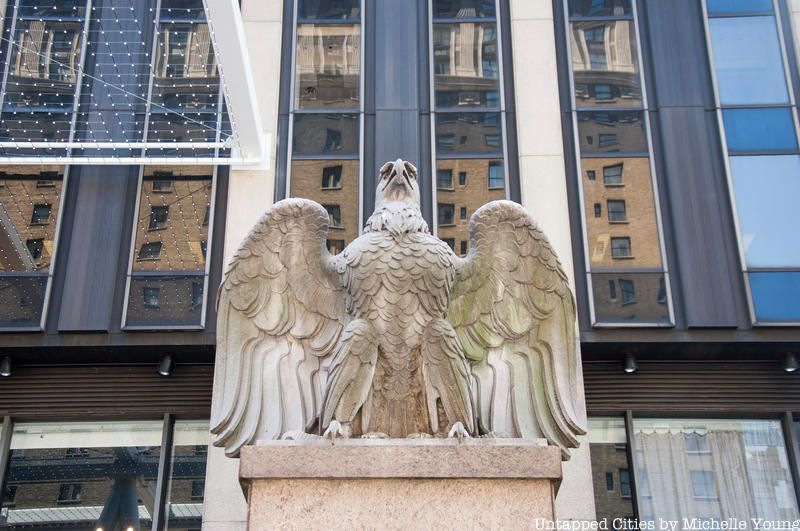
Two eagles remained at Penn Station, at 7th and 33rd Street and 7th Avenue near 31st Street, until 2019, when they were removed during renovations. They were located in a far less noble position compared to their original location, above the frieze of the neoclassical McKim, Mead & White edifice. A spokesperson for Vornado let us know that the company hired a specialist to securely crate the eagles, which were being stored on-site during the redevelopment.
One of those eagles has since reappeared at the Penn One West Plaza after restoration by Urban Art Project (UAP)! Visit the eagle on our next Secrets of Penn Station and Moynihan Train Hall Tour:

Discover hidden remnants of old Penn Station and explore a new train hall inside a historic Post Office building!
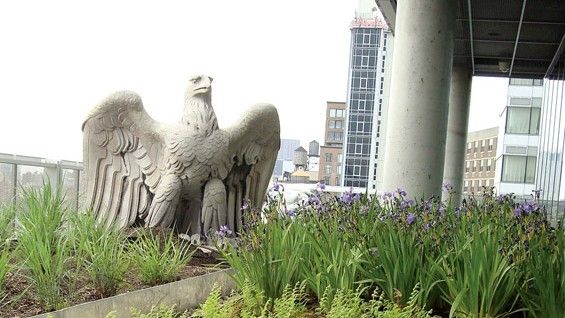
Students and the dean at the Cooper Union petitioned the Pennsylvania Railroad to get one of the eagles on campus in 1965, after the demolition of Penn Station. The desire for one of the stone birds came from the fact that the sculptor of the eagles, Adoph Weiman, was a Cooper Union graduate.
The Penn Station eagle was located on Cooper Union’s New Jersey campus until 1973 when it was moved to the courtyard of another Cooper building on Third Avenue in the East Village. The school sold this building to plan for its new building at 41 Cooper Square, where the eagle was given a new home on the 8th-floor green roof in 2009.

One eagle is located at the Long Island Railroad Hicksville Station. This specific sculpture was saved by Samuel A. Goldberg, a Hicksville High School Latin teacher, and his class. Inscribed in Latin on a plaque below the eagle are the words (translated): “A Roman eagle once urban is now in Hicksville, quite suburban.”
Acquired in 1965, the eagle was designated in a grand ceremony where the students dressed in togas and carried Latin signs. In 2010, the eagle got a much-needed face-lift, or shall we say “beak”-lift, and was redesignated.
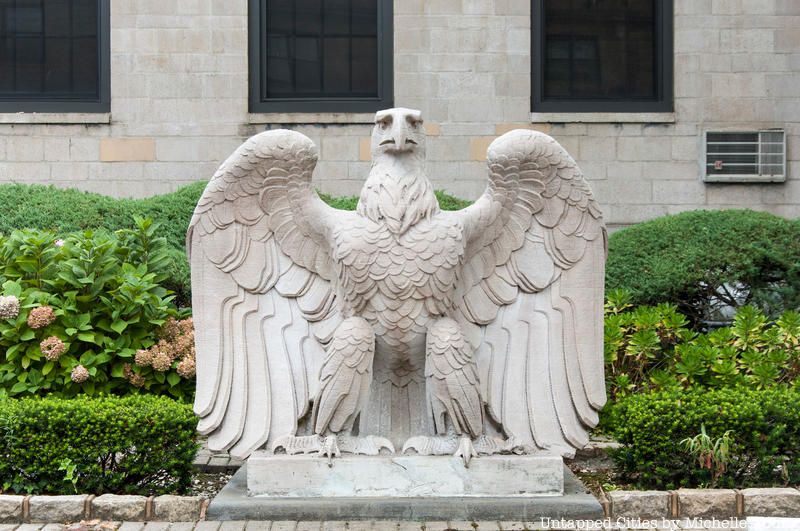
Two eagles are located on the campus of the United States Merchant Marine Academy in Kings Point, in front of O’Hara Hall, a gymnasium. They originally sat on the 7th Avenue facade of the original Pennsylvania station. A set of two nearby plaques state that they are “symbols of our national heritage,” that they were placed here on either side of the entrance to O’Hara Hall in 1964, and that “two of their mates now guard the main entrance to Madison Square Garden.”
The King’s Point campus was once the Henri Bendel estate (later purchased by Walter P. Chrysler of automobile fame). Another part of the Merchant Marine Academy was previously the William Slocum Barstow estate, a Gold Coast property along the Long Island north shore. Barstow was a partner of Thomas Edison and later served as the first mayor of Kings Point.

In Ringwood, New Jersey, two eagles welcome visitors to the New Jersey Botanical Garden, also known as Skylands. They landed here thanks to Cooper Union, which had originally adopted three of the Penn Station eagles. Cooper Union ran a camp in Ringwood for a while, so two of the eagles ended up here.
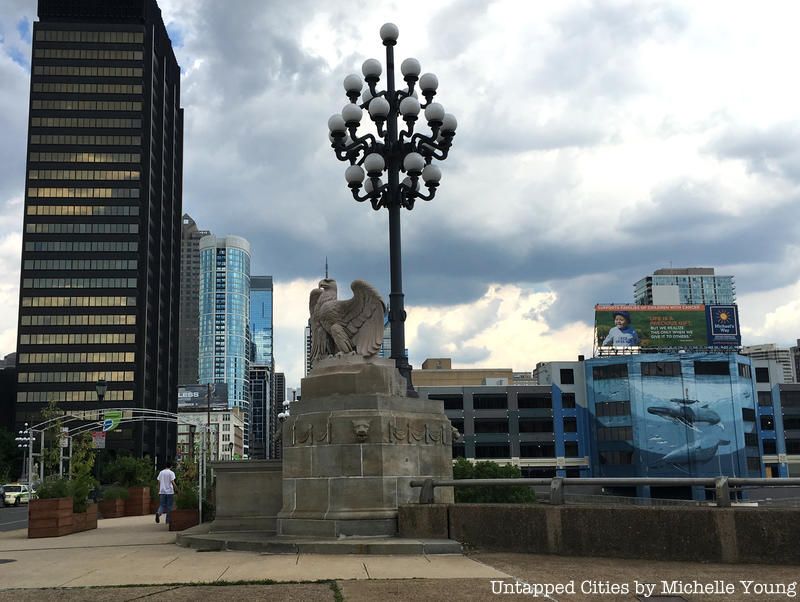
Four eagles made their way to Philadelphia where they are perched on the Market Street Bridge which spans the Schuylkill River. According to the book Public Art in Pennsylvania, the four eagles were given to the Fairmont Park Art Association (now the Association for Public Art) and installed on Market Street Bridge four years after the demolition of Penn Station.

The Market Street Bridge eagles aren’t the only ones that made it outside of New York. Another eagle made it to Pennsylvania and now sits on the campus of Valley Forge Military Academy. This eagle was originally owned by philanthropist and media mogul Walter Annenberg. Annenberg was behind publications like TV Guide, The Saturday Evening Post, The Atlantic Monthly, Seventeen magazine, and The Philadelphia Inquirer. Annenberg was also a United States Ambassador to the United Kingdom from 1969 to 1974 and was on the board of Penn Central Railroad.
Annenberg covered the cost of moving the eagle from New York City to his estate, known as Inwood, in Wynnewood, Pennsylvania. It stood on his estate for several years before he donated the Penn Station eagle to the Valley Forge Military Academy to commemorate the students and alumni who lost their lives in service of the nation in the Vietnam War.
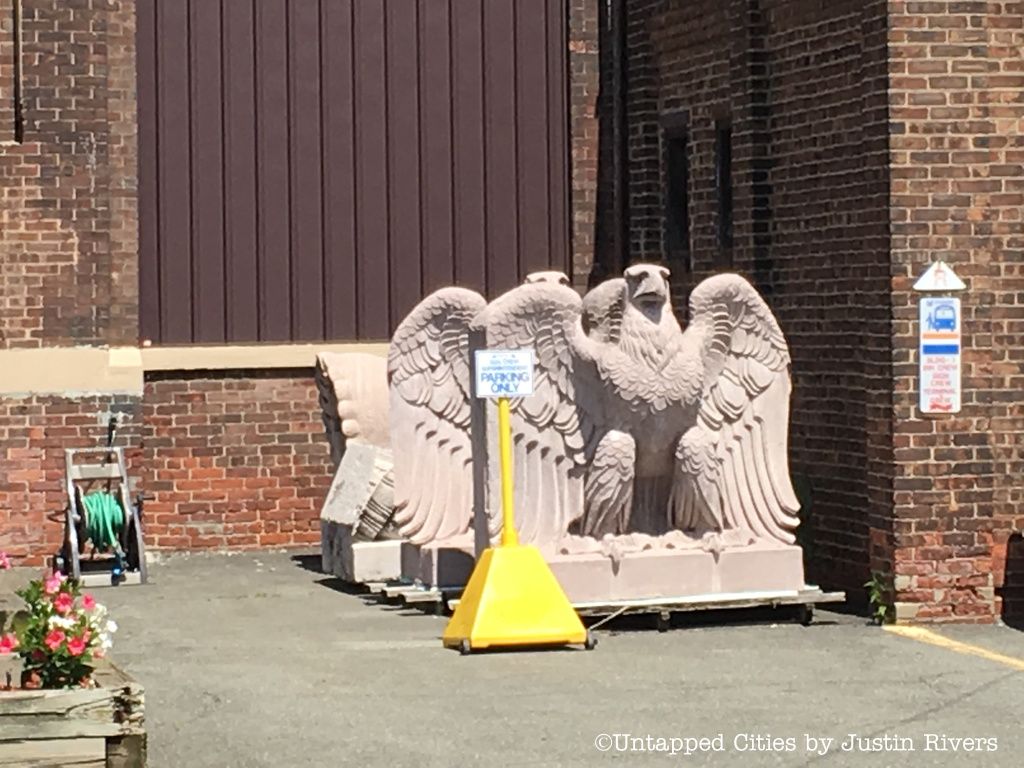
One of the most surprising eagle finds was when a guest on our Remnants of Penn Station tour tipped us off to these two eagles at a NJ Transit facility in Newark. The two eagles sat in conjunction with portions of the Day and Night sculpture which was also on the facade of the original Penn Station. As of October 2021, the eagles were still seen at the facility on Google satellite images.
The Day and Night sculpture is remembered in Penn Station by an Andrew Leicester mural. Pieces of the original Adolph Weinman clock sculpture can be found at the Steinberg Family Sculpture Garden at the Brooklyn Museum.
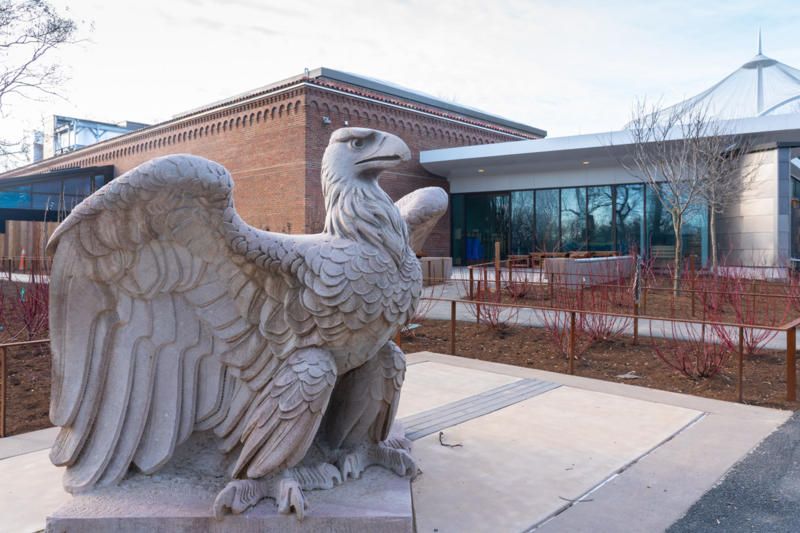
The Penn Station eagle at the National Zoo is located next to the Bird House. Secretary of Smithsonian S. Dillon Ripley and other board members of the National Zoological Park negotiated for one to be given to the site. They were successful and received the eagle as a gift from Stuart Saunders, Chairman of the Board of the Pennsylvania Railroad. The eagle arrived on June 23, 1965 and was originally installed at the entrance.
The eagle temporarily traveled to Montreal for the Expo 67 in Montreal, where it appeared in the US Pavilion. Upon it return, the eagle was placed in front of the Bird House.
One of the alumni from Hampden-Sydney College, William Lashley, was a vice president of the Pennsylvania Railroad. Some reports indicate that the eagle was located at the end zone of the football field at some point. It is dedicated to the students who lost their lives in World War II.
This eagle from the front facade of the original Penn Station found a home in Vinalhaven, Maine because the granite quarry for the original Penn Station was located here. Vinalhaven also supplied the granite for the Brooklyn Bridge and the US State Capitol.
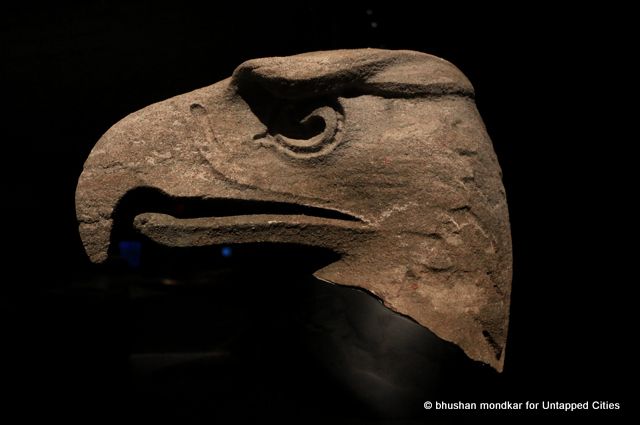
This remnant of an eagle head appeared in the exhibit “Saving Place: 50 Years of NYC Landmarks” at the Museum of the City of New York. It ended up in the private collection of a family in Poughkeepsie, taken home by a mechanic at the railroad during the demolition. Dave Morrison, resident Penn Station eagle expert, confirmed its origin and the eagle was temporarily on display at the Transit Museum’s Grand Central Annex in 2011 for the exhibit “The Once and Future Penn Station.
The above eagles are mostly what remains of the “large” eagles on Penn Station. There were also eight smaller eagles, two of which are located in Ringwood, New Jersey (shown above). The famous Night and Day clock sculpture with two smaller eagles, is now the Eagle Scout Fountain in Kansas City, Missouri. Other remnants of Penn Station are scattered throughout New Jersey and New York. In a New York Times article, Alexandros Washburn, then the President of the Pennsylvania Station Redevelopment Corporation and former director of urban design and the NYC Department of City Planning, spoke of the continuing lore of Penn Station:
People–not governments or corporations or institutions–have been keeping the memory of Penn Station alive for 35 years. We’ve found threads from the fabric of Penn Station stretching across the country. Few buildings can inspire that continuum. It makes you want to reweave those threads.

Discover hidden remnants of old Penn Station and explore a new train hall inside a historic Post Office building!
Next, discover the Top 10 Secrets of Grand Central Terminal and see photos of the demolition of Pennsylvania Station. Get in touch with the author @untappedmich.
Subscribe to our newsletter